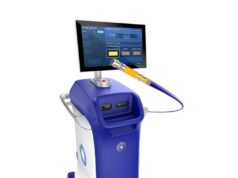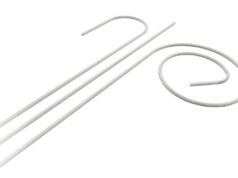
A new study published online in the Journal of the American College of Cardiology has found that people experiencing sudden cardiac arrest at exercise facilities have a higher chance of survival than at other indoor locations, likely due to early cardio-pulmonary resuscitation and access to an automated external defibrillator (AED), among other factors. The findings underscore the importance of having AEDs in places where people exert themselves and are at greater risk of sudden cardiac arrest.
Previous studies have shown that regularly exercising greatly reduces a person’s overall risk of sudden cardiac arrest; however, during and immediately following exercise the risk of sudden cardiac arrest is slightly higher. Because AEDs have been proven to save lives when used quickly after sudden cardiac arrest, they are often placed in health clubs and gyms. Less is known about the frequency of sudden cardiac arrest at other indoor locations where exercise takes place-such as bowling alleys, dance studios or community centres-but AED placement is less common.
This study looked at the frequency, treatment and outcomes of sudden cardiac arrest at both traditional and alternative exercise facilities. Richard L Page, chair of the Department of Medicine at the University of Wisconsin School of Medicine and Public Health, USA, and colleagues looked at 849 sudden cardiac arrests that occurred at public indoor facilities in Seattle and King County, Washington, USA, from 1996–2008.
Location of the sudden cardiac arrest was categorised as occurring at a traditional exercise facility (health clubs, fitness centres), an alternative exercise facility (bowling alleys, workplace or hotel gyms, dance studio) or a non-exercise facility (banks, restaurants, shopping centres, airports).
In total, 52 sudden cardiac arrests occurred at traditional exercise facilities, 84 at alternative exercise facilities and 713 at non-exercise facilities. Survival rates were 56%, 45% and 34%, respectively. Where information was available on the activity at the time of arrest, in 77% of cases the sudden cardiac arrest occurred during exercise, with only 18% occurring after exercise and 4% before exercise.
Researchers also collected information on what type of exercise people were doing when the sudden cardiac arrest occurred. The most common activity was basketball, with 20.5% of occurrences. Basketball is often played at non-traditional exercise facilities, like community centres or church gyms. Following basketball was dancing and “working out,” both at 11.6%; treadmill at 8.9%; tennis at 6.3%; bowling at 5.4%; and swimming at 4.5%.
“Our findings should encourage broader implementation of and adherence to recommendations for AED placement and sudden cardiac arrest response protocols at traditional exercise facilities,” said Page, lead author of the study and chair of the Department of Medicine at the University of Wisconsin School of Medicine and Public Health, Madison, USA. “In addition, these standards should be extended to alternative fitness facilities, where sudden cardiac arrest incidence is comparable to that seen at traditional exercise facilities.”









